A house called Cockadoodledoo: the €1.1m Swedish home with an eagles' nest view of the city
Advanced prefab timber house from Sweden comes with a crazy name and eagles’ nest views of the city and sea
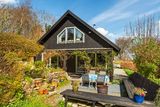
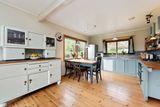
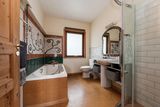
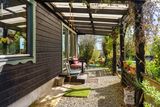
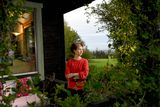
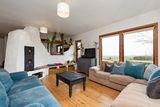
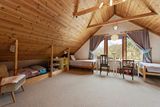

Cockadoodledoo Killakee Road, Rathfarnham, Dublin 16
Asking price: €1.1m Agent: DNG (01) 490 4666
Claudia Vende’s Swedish hill top timber home was built in just five days but took more than 20 years to finish. Back in 2002 Claudia and her family had secured a 6.2 acre hilltop site in rural Rathfarnham, Co Dublin with elevated views down over the city to the sea.
But what type of home to put there?
Looking for something different with an eco-friendly edge, the family opted for a pre-manufactured Swedish timber home as then offered by Scandinavian Homes in Moycullen. The company, which combined Swedish and local craftsmen in their crew, were then importing the houses in prepared kit form from Sweden.
Claudia Wende. Photo: Bryan Meade
While Ireland is more comfortable with timber homes today, back in 2002 most of us still didn’t trust their weather resistance to the Irish climate. This despite the fact that many inhabited timber homes in Sweden today date right back to the 13th century. The secret is in the wood.
“Mine is made from slow-grown Scandinavian pine which lasts forever and it provides a particular warmth and cosiness inside,” says Claudia. “At the time it was built timber frame was unusual in Ireland and so were a lot of the features we had put into it like high insulation, a heat recovery system, underfloor heating and triple glazing.
The kitchen
“We went down to Moycullen and they took us through the options. All were Swedish houses in their simplest purest form. Because when it comes to add-ons like porches, dormer windows and so on; that’s where the water starts to get in, at the joins. We picked out our house and we went down to see the owner’s own home, which was almost exactly the same as the one we chose.
“The crew of around six arrived and the house came in pieces on a truck. We had to arrange for the crew to be accommodated and fed. It was quite amazing to watch them put it up so fast. One day there was nothing there and less than a week later we had a house. Twenty years on, it looks the same.”
The view from the house
For a house that was so unusual in Ireland at the time, the family also came up with an unconventional name.
“We wanted something very different, not like the usual ‘Mountain View’ or whatever. The site was around a farm and there were lots of chickens, so we thought we were being funny going for Cockadoodledoo. The plus is that people never forget your address. At the same time we’ve had problems ordering a pizza because they think we’re having them on and they just hang up.”
The covered seating area
Claudia was then with her ex-partner and the couple didn’t have an endless budget. “We could afford the basic house but not the finish from Scandinavian Homes. So we had to do the rest ourselves. When we moved in the upstairs was just a big open floor. There was no bathroom up there. We had no kitchen.”
So when was the house finished?
“Haha! Last week! Seriously though, I’m from Leipzig and the German view is that a house is never finished. It’s always evolving and should change with your circumstances throughout your life. But I guess it took us about a year to put in all we needed. The advantage of this type of house is that you can change it again and again.
One of the bedrooms
“Usually in a new house the parents take the master bedroom, the largest room on the sunniest side. But we said ‘hang on a minute, parents only ever use their bedroom at night while children use them all day.’ So we gave our girls the biggest, brightest room and we took one on the north facing side. That sunny room became an indoor playground for all the local children.”
The stairs in the hall incorporates rustic tree trunks to add to the rustic atmosphere and a high-end Danish stove in the main living room was surrounded with bricks and then mortared over in an organic rounded form. “We burn logs in the stove but the surrounding bricks absorb that heat and then release it gradually.” In this way the bricks became an added storage heater. “We have underfloor electric heating but we haven’t used it for a long time. We discovered that with the stove we don’t actually need it.”
A reception room
As it stands the Cockadoodledoo measures around twice the size of the average three bed semi-detached at just over 2,000 sq ft. There’s an entrance hall with solid Scandinavian pine flooring opening out to a large lobby area. It has a utility room and the lobby area contains the rustic timber stairs to the first floor. The lobby leads into the living room where the rendered brick work from the stove has been fashioned into a sweeping wall divide separating the lobby area from the main living area with its has views over the gardens.
The open-plan layout has the kitchen/dining area and a door opens from here to the garden and a covered terrace for sitting out. The kitchen/dining area has a rustic built-in units with tile splashbacks. Off this is a full pantry.
The bathroom
The family bathroom has decorative mosaic tiled walls and cork tile flooring. There’s a full-size bath and a separate corner shower unit. There are four double bedrooms, two with vaulted ceilings, one with a walk-in wardrobe/dressing room and access to a balcony.
The site is just off Killakee Road, within walking distance of Massy’s Wood and Estate, a wooded wildlife and nature sanctuary for Dublin. While close to Lidl and a few minutes drive from Rathfarnham Village, its situation is entirely rural. At night the view transforms to twinkling city lights below including the Poolbeg towers.
Cockadoodledoo comes with a respectable C2 rating, however, Ireland’s BER rating system has anomalies. The house was marked down for having underfloor heating powered by electricity (despite it not being used) and for its windows being 20 years old (despite the current triple-glazed Swedish versions beating new double glaze).
“Really, it’s an energy saving house that was ahead of its time. People really love the timber home look,” says Claudia. Today its manufacturer has moved on to build ultra-efficient Passive Houses; working to exacting German rather than Scandinavian standards. With her children flying the nest, Claudia is relocating. DNG (01) 490 4666 seeks €1.1m for this hill top home on 6.1 acres.














